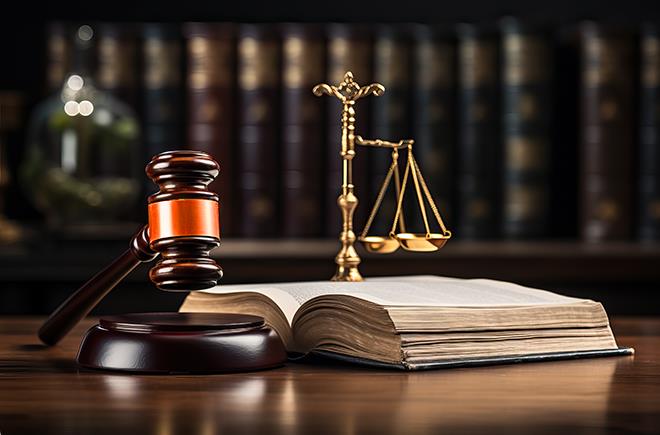Madrid Protocol: Obtaining and Maintaining International Trademark Protection
Filing Procedure, Deficiency Notices, Subsequent Designations, Application Amendments, and More

Course Details
- smart_display Format
On-Demand
- signal_cellular_alt Difficulty Level
- work Practice Area
Trademark and Copyright
- event Date
Tuesday, February 15, 2022
- schedule Time
1:00 p.m. ET./10:00 a.m. PT
- timer Program Length
90 minutes
-
This 90-minute webinar is eligible in most states for 1.5 CLE credits.
This CLE course will guide IP counsel on the Madrid Protocol, including the application and examination process, how and where to file, amending an application, and dividing a registration. The panel will examine how to respond to a notice of irregularity from WIPO, apply for subsequent designations, and use the e-renewal process. The group will also discuss the limitations or drawbacks of the system.
Faculty

Mr. Kunz-Hallstein practices in all fields of intellectual property, especially in trademark prosecution and litigation as well as portfolio management.

Mr. Leonard provides strategic counsel on the availability and adoption of trademarks as well as the management and enforcement of trademark portfolios in the United States and abroad. He also represents clients in opposition and cancellation proceedings before the U.S. Patent and Trademark Office’s Trademark Trial and Appeal Board and various U.S. district courts. Keenly adept at managing and enforcing domestic and international intellectual property rights, he is a go-to resource on trademarks, copyrights, and other IP-related issues for clients in the telecommunications, computer software and technology, entertainment and sports, pharmaceutical, chemical, food and beverage, publishing, scientific research, and apparel industries.
Description
The Madrid Protocol provides a mechanism by which trademark applicants can seek protection in all Madrid Protocol countries (109 contracting parties) through a single registration. However, while there are significant benefits to an International Registration, including cost savings, flexibility, and easier portfolio management, there are disadvantages and risks too.
Such risks include the dependence of an international application on an underlying application filed with or a registration issued by the Office of Origin. If the underlying application or registration is limited or abandoned during the five-year dependency period, the International Registration is canceled with the option to convert the registration to national registrations.
The International Registration is also limited to the goods or services in the application or registration in the Office of Origin. For U.S. applicants, this means the International Registration will be subject to the requirements and limitations on goods and services that the USPTO requires.
Counsel must understand the ins and outs of obtaining, maintaining, transferring, and enforcing registrations through the Madrid system.
Listen as our authoritative panel offers guidance on navigating the Madrid Protocol, including the mechanics of the process, how and where to file, amending an application, and dividing a registration. The panel will examine how to respond to a deficiency notice from WIPO, subsequent designations, differences among countries in handling certain aspects of Madrid designations, and the e-renewal process. The panel will also discuss the limitations or drawbacks of the system.
Outline
- Mechanics of the Madrid Protocol
- How and where to file
- How the process works
- 18-month rule
- Responding to a deficiency notice from WIPO
- Subsequent designations and differences among countries in handling certain aspects of Madrid designations
- Amending an application
- For only one country
- For multiple countries
- How to divide a Madrid registration
- E-renewal process
- Limitations or drawbacks of the system
Benefits
The panel will review these and other high priority issues:
- What are the advantages and disadvantages of filing under the Madrid Protocol?
- What are the differences among countries in handling certain aspects of Madrid designations?
- What steps should counsel take to amend a trademark application for one country? For multiple countries?
- How should counsel utilize the Madrid Protocol to protect trademarks worldwide?
Related Courses

IP Due Diligence in M&A: Leveraging Diligence Results When Negotiating Price and Other Deal Terms
Thursday, April 10, 2025
1:00 p.m. ET./10:00 a.m. PT

Comparative Advertising: Avoiding Trademark Infringement, Disparagement
Friday, April 11, 2025
1:00 p.m. ET./10:00 a.m. PT

Functionality in Trade Dress Prosecution and Litigation: Protecting the Look and Feel of Products and Packaging
Thursday, April 10, 2025
1:00 p.m. ET./10:00 a.m. PT
Recommended Resources
Getting the Most Out of BARBRI Resources
- Learning & Development
- Business & Professional Skills
- Talent Development
Transforming CLE from a Requirement to a Career Advantage
- Learning & Development
- Career Advancement
- Talent Development